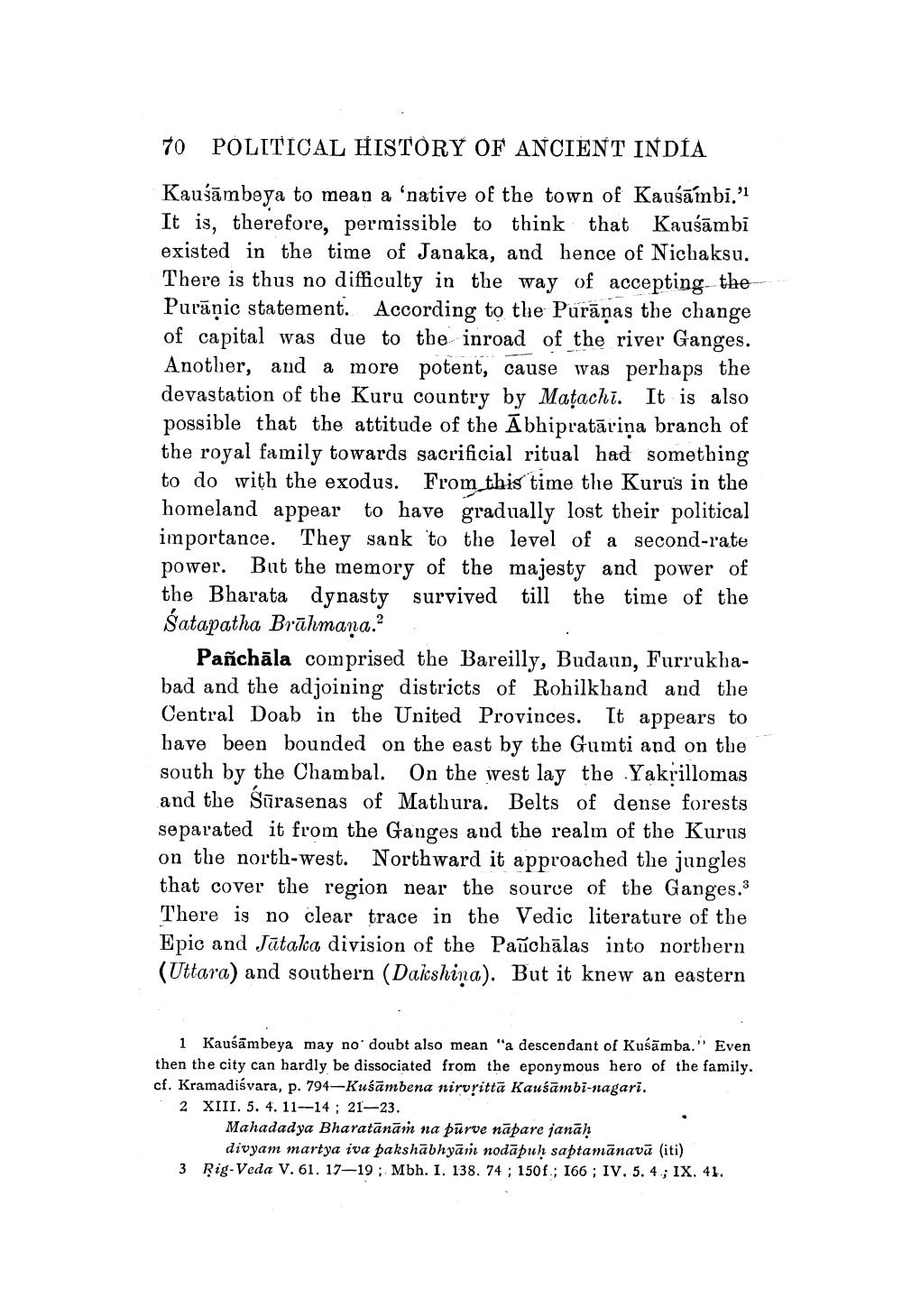________________
70 POLITICAL HISTORY OF ANCIENT INDÍA
Kaušāmbeya to mean a 'native of the town of Kausā mbi.'' It is, therefore, permissible to think that Kaušāmbi existed in the time of Janaka. and hence of Nichaksu. There is thus no difficulty in the way of accepting the Puräņic statement. According to the Purāņas the change of capital was due to the inroad of the river Ganges. Another, and a more potent, cause was perhaps the devastation of the Kuru country by Matachi. It is also possible that the attitude of the Ābhipratāriņa branch of the royal family towards sacrificial ritual had something to do with the exodus. From this time the Kurus in the homeland appear to have gradually lost their political importance. They sank to the level of a second-rate power. But the memory of the majesty and power of the Bharata dynasty survived till the time of the Satapatha Brāhmaṇa.?
Panchāla comprised the Bareilly, Budaun, Furrukhabad and the adjoining districts of Rohilkhand and the Central Doab in the United Provinces. It appears to have been bounded on the east by the Gumti and on the south by the Chambal. On the west lay the Yakrillomas and the Sūrasenas of Mathura. Belts of dense forests separated it from the Ganges and the realm of the Kurus on the north-west. Northward it approached the jungles that cover the region near the source of the Ganges.3 There is no clear trace in the Vedic literature of the Epic and Jātaka division of the Panchālas into northern (Uttara) and southern (Dakshina). But it knew an eastern
cf. KT XIII. 5. 4. adya Bharat.pakshābhyang
1 Kaušāmbeya may no doubt also mean "a descendant of Kuśāmba." Even then the city can hardly be dissociated from the eponymous hero of the family. cf. Kramadiśvara, p. 794-Kuśāmbena nirurittā Kausāmbi-nagari. 2 XIII. 5. 4. 11--14 ; 21—23.
Mahadadya Bharatānām na pūrve nāpare janāḥ
divyam martya iva pakshābhyām nodāpuh saptamānavā (iti) 3 Rig Veda V. 61. 17-19; Mbh. I. 138. 74 ; 150 f.; 166 ; IV. 5.4.; IX. 41.




